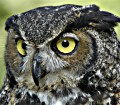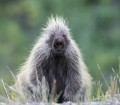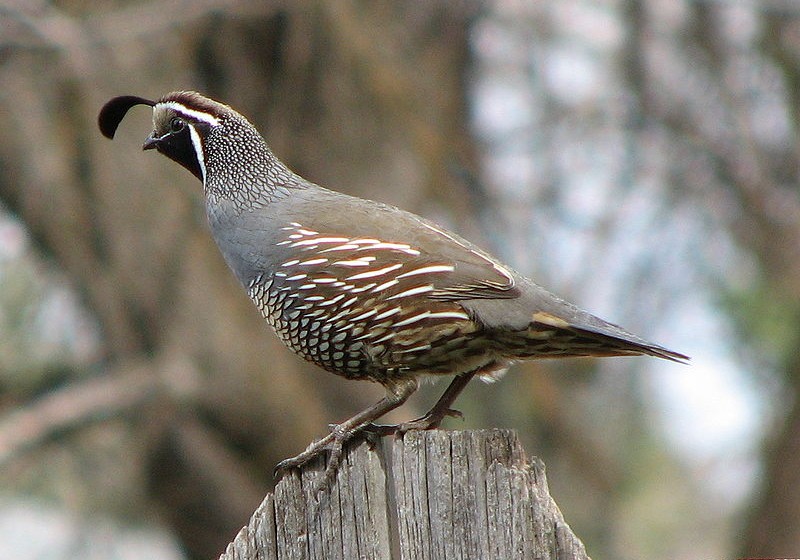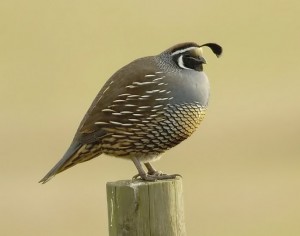The California Quail (Callipepla Californicus) also goes by the name Valley Quail and has been the California State bird since 1931. (sorry California Condor) They are found throughout the west coast from Canada to Mexico with some pockets in Nevada, Utah and Idaho. Quail spend most of there time on the ground in areas of coastal scrub, chaparral and open woodlands. Quail are adapted to living in arid regions and don’t require water to drink and can get by with only the moisture contained in the vegetation they eat.
Quails can be seen in groups called coveys, which can be as large as 200 birds
They are a short and plump little bird, smaller than a pigeon and popular as a game bird. Their most distinguishing feature is a dark top knot of six feathers that dangles over the forehead in the shape of a comma. This plumage is longer on males who also have a black throat ringed in white and a scale pattern that the females do not. Both sexes are mottled earth tones to blend in with the ground scenery which is where they spend most of there time.
Mornings and early evening is when these birds are most active. Quails can be seen in groups called coveys, which can be as large as 200 birds, scratching about on the ground looking for berries, acorns and leaves to eat. Quail will leave tell-tale circular patterns in the dirt which is the result of their morning “dust baths”. If flushed, frightened Quail will usually run for the nearest brush for cover, but they are also capable of quick sprints in the air and will seek safety in trees.
During mating season Quail nests are also located on the ground and consist of a shallow depressions scratched out of the dirt and lined with grass. Females will lay up to twenty eggs at a time that are tan with darker brown spot- again a sign of their ground based lives. Males and females raise their young together, the female tending the eggs and chicks while the male stands guard for protection.
If you are hiking along California’s coastal trails in the morning you are very likely to see a covey of these pear shaped birds making a dash in the open. You may also hear the Quail’s distinctive three part call that sounds a lot like chi-ca-go, which is rather odd coming from the California State Bird.




